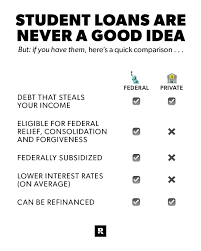
If you’re wondering, “How can I consolidate my private student loans?” then you’ve come to the right place. There are several ways to consolidate your private loans, including refinancing, using a CFA, and income-driven repayment plans. Here’s a quick review of each. There are some major differences between these methods, and your best bet might be to choose the one that’s right for your needs.
Lower interest rates on private student loans
If you are in college and are thinking about applying for a student loan, consider applying for a private student loan. These loans typically have lower interest rates than federal loans. Depending on your credit history and financial need, private student loans can be a good option. They may be available at a lower interest rate than federal loans. Talk to the financial aid office at your school to find out if you qualify for a private student loan. Most lenders require a school certification for additional aid.
A private student loan with a low interest rate is best for students with good credit and a creditworthy cosigner. The interest rate is usually around the prime plus 0.50%, making it competitive with the Federal PLUS Loan. Be aware that these loans are available only to those with good credit or a creditworthy cosigner. Borrowers with less than stellar credit are likely to face problems qualifying for the best rates, but a low interest rate can be worth it.
Refinancing
Refinancing your private student loans offers several benefits, including lowering interest rates and monthly payments. While you won’t have to include all your loans in the consolidation process, this option can help you save money in the long run by reducing the monthly payments. In addition, you can change the lender, interest rate, and terms of your new loan. This option is particularly helpful for people who don’t qualify for a federal student loan consolidation.
Refinancing your private student loans will also lower the monthly payment, thereby improving your debt-to-income ratio. Lenders typically prefer to see your DTI at or below 36%. If you have been putting off refinancing your loans, you may want to consider refinancing them. This method can make both federal and private loans easier to manage and reduce your monthly payments. Regardless of whether or not refinancing your private student loans is a wise move, it’s worth considering the costs and benefits before making a final decision.
Using a CFA
There are many benefits to using a CFA to consolidate private student debt. One of these benefits is the lower interest rate. The interest rates on private student debt vary, and it’s possible to qualify for lower rates if you’ve improved your credit history and/or found a new job. You’ll also get a variety of repayment terms. You’ll want to choose the lender that best meets your needs.
Another benefit of private loan consolidation is the lower monthly payment. A lower interest rate will allow you to make fewer monthly payments, which can save you a significant amount of money over the life of the loan. In addition, some private lenders will lower your interest rate so you can save more money in the long run. Some benefits of using a CFA to consolidate private student loans include:
Income-driven repayment plans
While income-driven repayment plans for private student loans can be beneficial, many struggling borrowers do not participate in these programs. The majority of these borrowers earn less than $20,000 per year and face a higher risk of delinquency. In addition, those who are earning a moderate income are more likely to enroll in these programs. The monthly payments for income-driven plans are often unaffordable for many borrowers. According to a recent Pew Research Center survey, almost half of IDR borrowers feel that their monthly payments are too high.
In an income-driven repayment plan, your monthly payment is determined by your adjusted gross income in the prior tax year. This may not reflect your current financial situation. For example, if you lost your job or received a pay cut, your income may be lower than before. If this happens, you must certify your income and family size every year. You must also submit a new application and select’recalculated payment’ as the reason for your change of circumstances.



